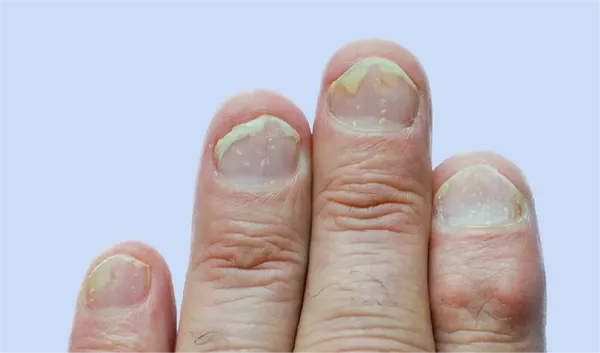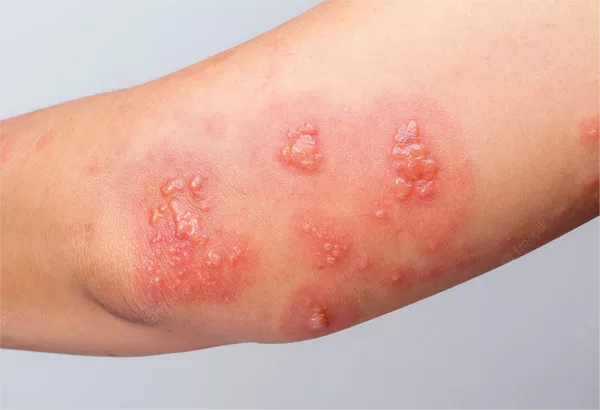Nail health is an essential aspect of overall well-being, often overlooked until issues arise. One such issue is nail psoriasis, a condition frequently misunderstood and misdiagnosed as a fungal infection. This confusion stems from the similarity in symptoms between the two conditions, but the underlying causes and treatments differ significantly. This article aims to clarify what nail psoriasis is, how it differs from fungal infections, and the appropriate approaches for diagnosis and management.
What is Nail Psoriasis?
Nail psoriasis is a manifestation of psoriasis, a chronic autoimmune disease that primarily affects the skin. Psoriasis occurs when the immune system mistakenly attacks healthy skin cells, leading to the rapid growth of skin cells and the formation of scales and red patches. When psoriasis affects the nails, it leads to various changes in nail appearance and texture, which can be both unsightly and uncomfortable.
Symptoms of Nail Psoriasis
Nail psoriasis can present with several distinct symptoms, including:
- Pitting: Small, shallow depressions on the surface of the nails.
- Discoloration: Nails may turn yellow, brown, or greenish, resembling the colors often associated with fungal infections.
- Thickening: Nails can become thicker than usual, a condition known as hyperkeratosis.
- Onycholysis: The nail may separate from the nail bed, creating a gap that can accumulate dirt and debris.
- Subungual hyperkeratosis: The buildup of scales under the nail can cause discomfort and further thickening.
- Crumbling: Nails may become brittle and crumble easily.
Causes of Nail Psoriasis
Psoriasis, including nail psoriasis, is believed to result from a combination of genetic, immune system, and environmental factors. Individuals with a family history of psoriasis are more likely to develop the condition. Triggers such as stress, skin injuries, infections, and certain medications can exacerbate psoriasis symptoms.
Nail Psoriasis vs. Fungal Infections
The confusion between nail psoriasis and fungal infections arises because they share similar symptoms, such as nail discoloration and thickening. However, there are key differences:
Etiology:
Nail Psoriasis: An autoimmune condition where the body’s immune system attacks its own tissues.
Fungal Infections: Caused by dermatophytes, yeasts, or molds that invade the nail structure.
Appearance:
Nail Psoriasis: Often includes pitting and oil spots (yellow-red patches under the nail), which are not typical of fungal infections.
Fungal Infections: Usually present with uniform nail discoloration and thickening without pitting or oil spots.
Diagnosis:
Nail Psoriasis: Diagnosed based on clinical examination and patient history, sometimes supported by a biopsy.
Fungal Infections: Confirmed through microscopic examination and culture of nail clippings.
Treatment:
Nail Psoriasis: Managed with topical treatments, systemic medications, and lifestyle modifications.
Fungal Infections: Treated with antifungal medications, both topical and systemic.
SEE ALSO: Comprehensive Treatment Approaches for Arthropathic Psoriasis
Diagnosing Nail Psoriasis
Accurate diagnosis of nail psoriasis is crucial for effective treatment. Dermatologists typically use the following methods:
- Clinical Examination: A thorough inspection of the nails and surrounding skin. A history of psoriasis elsewhere on the body supports the diagnosis.
- Nail Biopsy: A small sample of nail tissue may be taken for microscopic examination to rule out other conditions, including fungal infections.
- Laboratory Tests: In some cases, tests to detect fungal elements are performed to exclude a fungal infection.
Treatment Options for Nail Psoriasis
Treatment of nail psoriasis aims to reduce symptoms, improve nail appearance, and enhance quality of life. The approach can be multifaceted and includes:
1. Topical Treatments:
- Corticosteroids: Applied directly to the nails to reduce inflammation.
- Vitamin D Analogues: Help to slow down the growth of skin cells.
- Calcipotriol: A synthetic form of vitamin D that can be applied to the nails.
2. Systemic Treatments:
- Biologics: Medications that target specific parts of the immune system.
- Methotrexate: An immunosuppressant that reduces inflammation and slows cell growth.
- Cyclosporine: Another immunosuppressant used in severe cases.
3. Phototherapy:
- PUVA Therapy: Combines a drug called psoralen with UVA light to treat the affected areas.
- UVB Therapy: Uses UVB light to slow the growth of affected skin cells.
4. Lifestyle and Home Care:
- Moisturization: Keeping nails and cuticles well-moisturized to prevent cracking and peeling.
- Protective Measures: Wearing gloves when doing household chores to protect the nails.
- Nail Care: Regular trimming and avoiding trauma to the nails.
Impact of Nail Psoriasis on Quality of Life
Nail psoriasis can significantly impact an individual’s quality of life. The visible nature of nail abnormalities can lead to self-consciousness and social embarrassment. Additionally, nail psoriasis can cause discomfort and pain, particularly when the nails thicken and press against shoes or other surfaces.
Psychological and Social Support
Given the potential psychological impact, support systems are vital for individuals with nail psoriasis. Counseling and support groups can provide emotional assistance and coping strategies. Connecting with others who understand the condition can also be beneficial.
The Importance of Differentiating Nail Psoriasis from Fungal Infections
Misdiagnosing nail psoriasis as a fungal infection can lead to inappropriate treatments that are not only ineffective but can also exacerbate the condition. Antifungal medications will not address the underlying autoimmune process of psoriasis and may cause unnecessary side effects. Therefore, a correct diagnosis is essential for effective management.
Conclusion
Nail psoriasis is a challenging condition that requires a nuanced understanding to differentiate it from fungal infections. While both conditions affect nail appearance, their underlying causes and treatments are distinct. Accurate diagnosis through clinical examination, biopsy, and laboratory tests is crucial. Effective treatment often involves a combination of topical and systemic therapies, phototherapy, and lifestyle modifications.
By understanding the differences between nail psoriasis and fungal infections, patients and healthcare providers can work together to develop a tailored treatment plan that addresses the specific needs of those affected by nail psoriasis. Awareness and education about this condition can help reduce misdiagnosis and improve the quality of life for those living with nail psoriasis.
Related Topics:

























